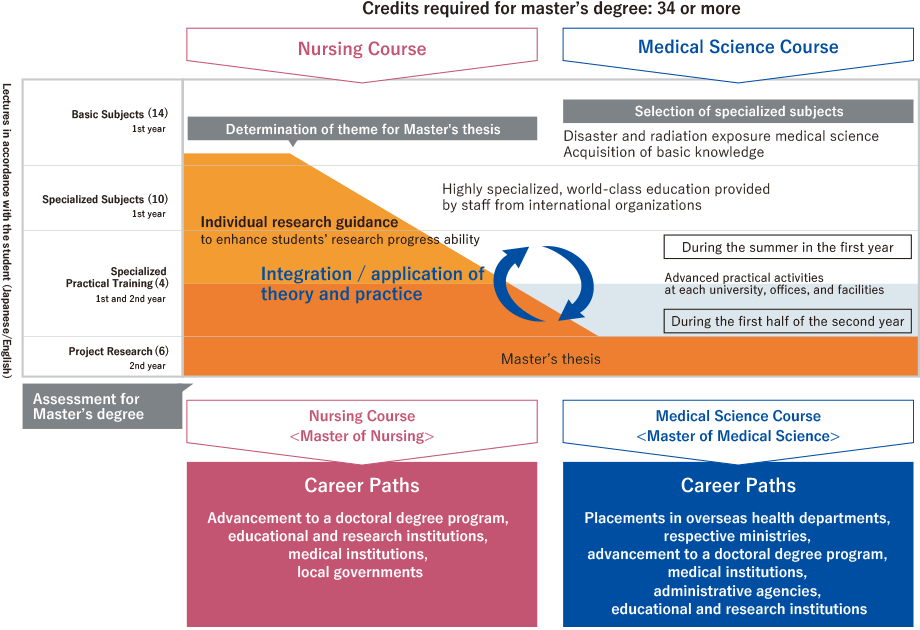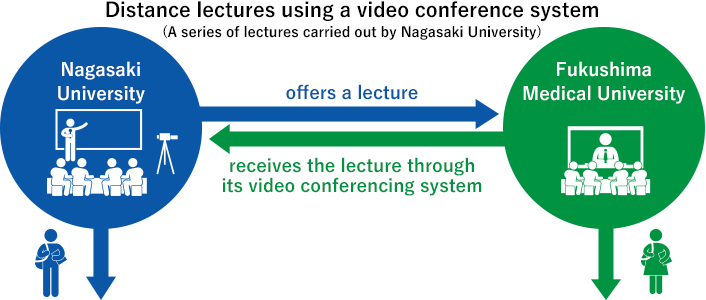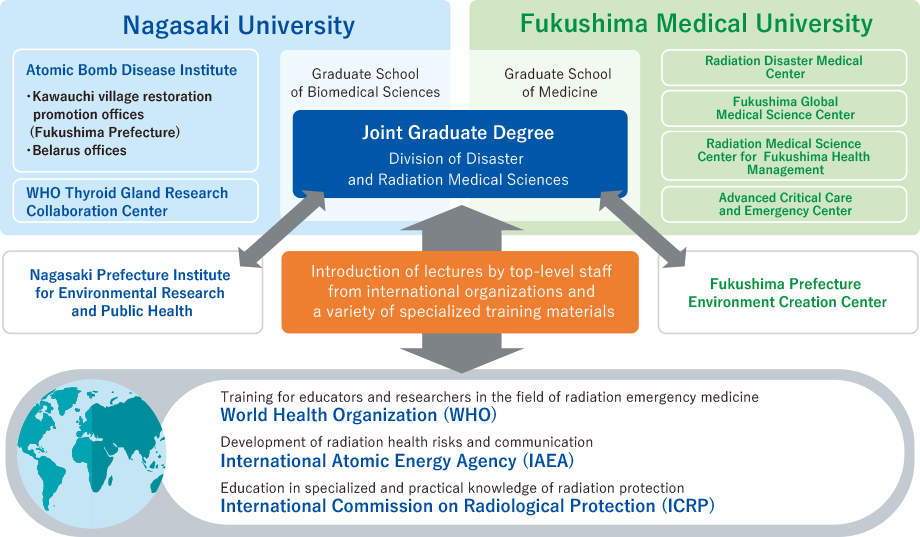(approximately five people per university)
>Introduction to Emergency Medicine
>Advanced Disaster Medicine
>Advanced Global Medicine
This course will train students how to deal with various disasters, including radiation accidents, based on specialized knowledge. The program will include medical treatment and crisis communication at the time of a disaster, planning and disaster prevention efforts, and providing mental care before and after a disaster.
Desired applicants:
police officers, fire fighters, clinical radiologists,
international students, etc.
(approximately five people per university)
>Nursing Ethics
>Radiation Health Promotion Nursing
>Radiation Nursing
Aimed at training nurses and public health visitors so they can gain expert knowledge of clinical radiation mitigation tasks, the provision of emergency medical treatment for exposure during and after radiation disasters, and communication of the health risks of radiation.
Desired applicants:
nurses, public health nurses, etc.
Basic Radiologic Science, Introduction to Disaster Medicine, Risk Communication, Introduction to Risk Assessment, Radiation Health Effects and Radiation Emergency Medicine, Epidemiology
After enrollment, in the first year, students will enroll in the common, basic subjects that are requirement for both courses. Subsequently, they will enroll in specialized subjects according to their respective courses. In the second year, students complete the specialized practical training program, conduct a research project, and write a Master’s thesis.

In our joint degree program, students are required to take ten or more credits from the partner university to complete their course. In addition to attending lectures at their home university, students will attend lectures at the partner university through a video conference system. In principle, students need to pay the travel and accommodation expenses for practical training, but this burden can be reduced considering the training period or by using university accommodations or guest houses.

Nagasaki University: Kawauchi Village training
Nagasaki University: atomic bomb survivors medical training
Nagasaki University: radiation nursing training
Fukushima Medical University: emergency medical training
Fukushima Medical University: radiation disaster medical training
We have gathered the faculties of disaster and radiation exposure medical science from both universities and utilized Nagasaki University’s Kawauchi village restoration promotion offices and Fukushima Medical University’s Radiation Medical Science Center. In addition, we offer lectures in English by convening the faculty members from the World Health Organization (WHO), which plays a central role in the field of disaster exposure medical science; the International Atomic Energy Agency (IAEA), a group of nuclear experts; and the International Commission on Radiological Protection (ICRP).
